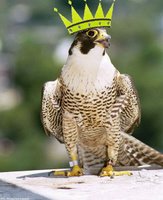
Wednesday, October 04, 2006
The Daily Hump: All The Mews That's Fit To Print
 For you Brits in the audience, you've undoubtedly stumbled across mews while shuffling around the larger cities, especially London. Even Manhattanites have likely walked down Washington Mews (pictured) just north of Washington Sq Park and home to many an NYU language department. As one would expect "mew" in these cases has less to do with feline cries and more to do with the type of thoroughfare--but what exactly is a mew?
For you Brits in the audience, you've undoubtedly stumbled across mews while shuffling around the larger cities, especially London. Even Manhattanites have likely walked down Washington Mews (pictured) just north of Washington Sq Park and home to many an NYU language department. As one would expect "mew" in these cases has less to do with feline cries and more to do with the type of thoroughfare--but what exactly is a mew?Per the American Heritage Dictionary a mews is (or one can say "are"...either the singular or plural verb is correct):
1. A group of buildings originally containing private stables, often converted into residential apartments.
2. A small street, alley, or courtyard on which such buildings stand.
 Fair enough. The most famous of mews is likely the Royal Mews near Buckingham Palace where the Queen's coaches are kept. Originally, the Royal Mews were at Charing Cross built on the site of an even older mews, the one for the royal hawks. During the middle ages a mew was a cage for birds, especially hawks, when they were moulting. The Royal Mews came into existence shortly after the falconry fad was first exported from France to England post-Norman conquest of 1066. Falcon happens to be a French loanword, as is mew (French being the language of the court for both the Norman and early Plantagenet kings), which came from the verb muer, the act of shedding feathers. Muer is from the Latin mūtāre (to change), which is of course responsible for our modern English mutate and mutant.
Fair enough. The most famous of mews is likely the Royal Mews near Buckingham Palace where the Queen's coaches are kept. Originally, the Royal Mews were at Charing Cross built on the site of an even older mews, the one for the royal hawks. During the middle ages a mew was a cage for birds, especially hawks, when they were moulting. The Royal Mews came into existence shortly after the falconry fad was first exported from France to England post-Norman conquest of 1066. Falcon happens to be a French loanword, as is mew (French being the language of the court for both the Norman and early Plantagenet kings), which came from the verb muer, the act of shedding feathers. Muer is from the Latin mūtāre (to change), which is of course responsible for our modern English mutate and mutant.mews [OED]
mew [OED]
falconry [Wikipedia]
Labels: Anglo-Norman, Latin, The Daily Hump
:: posted by David, 7:54 AM
1 Comments:
very a-mews-ing.
